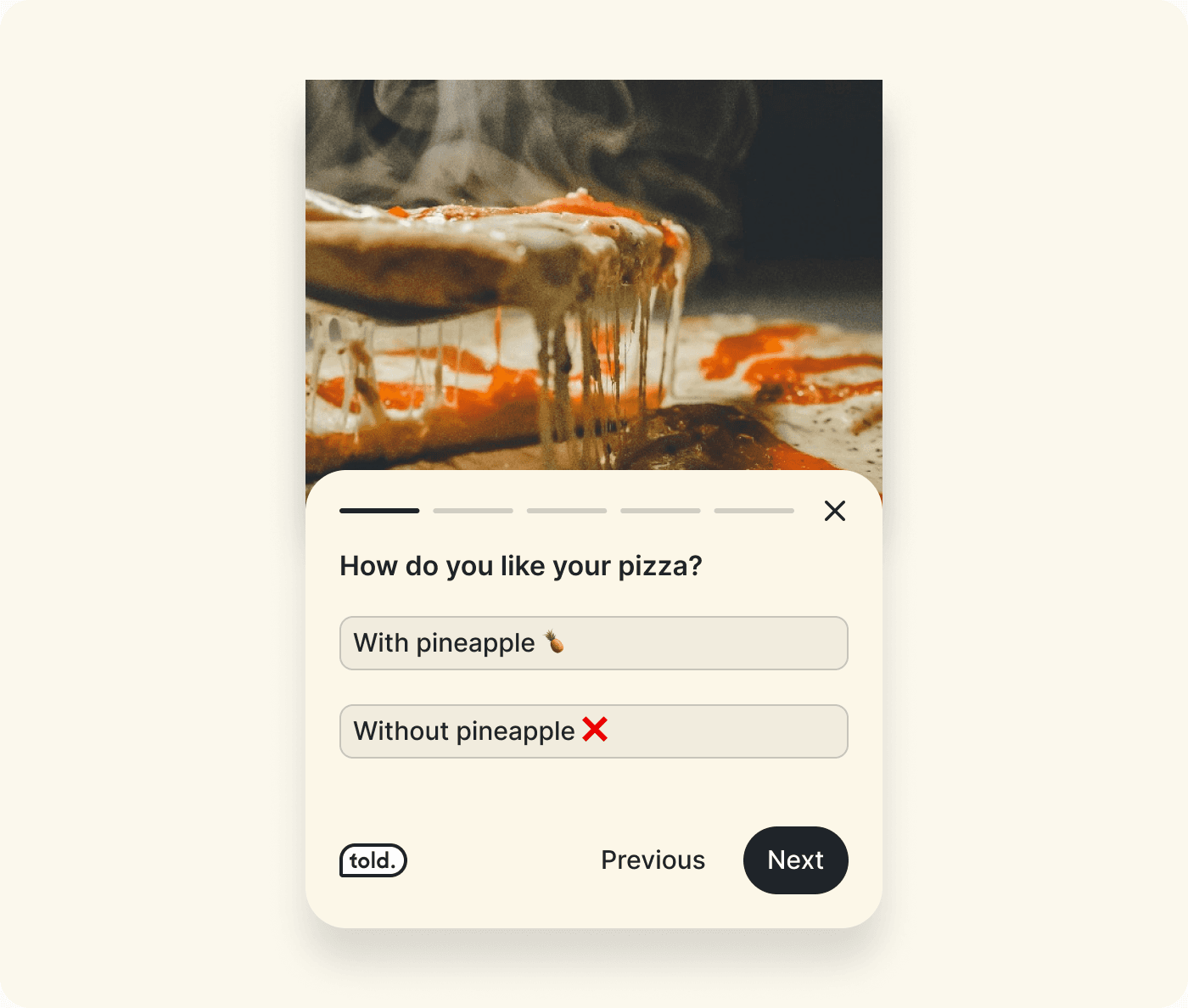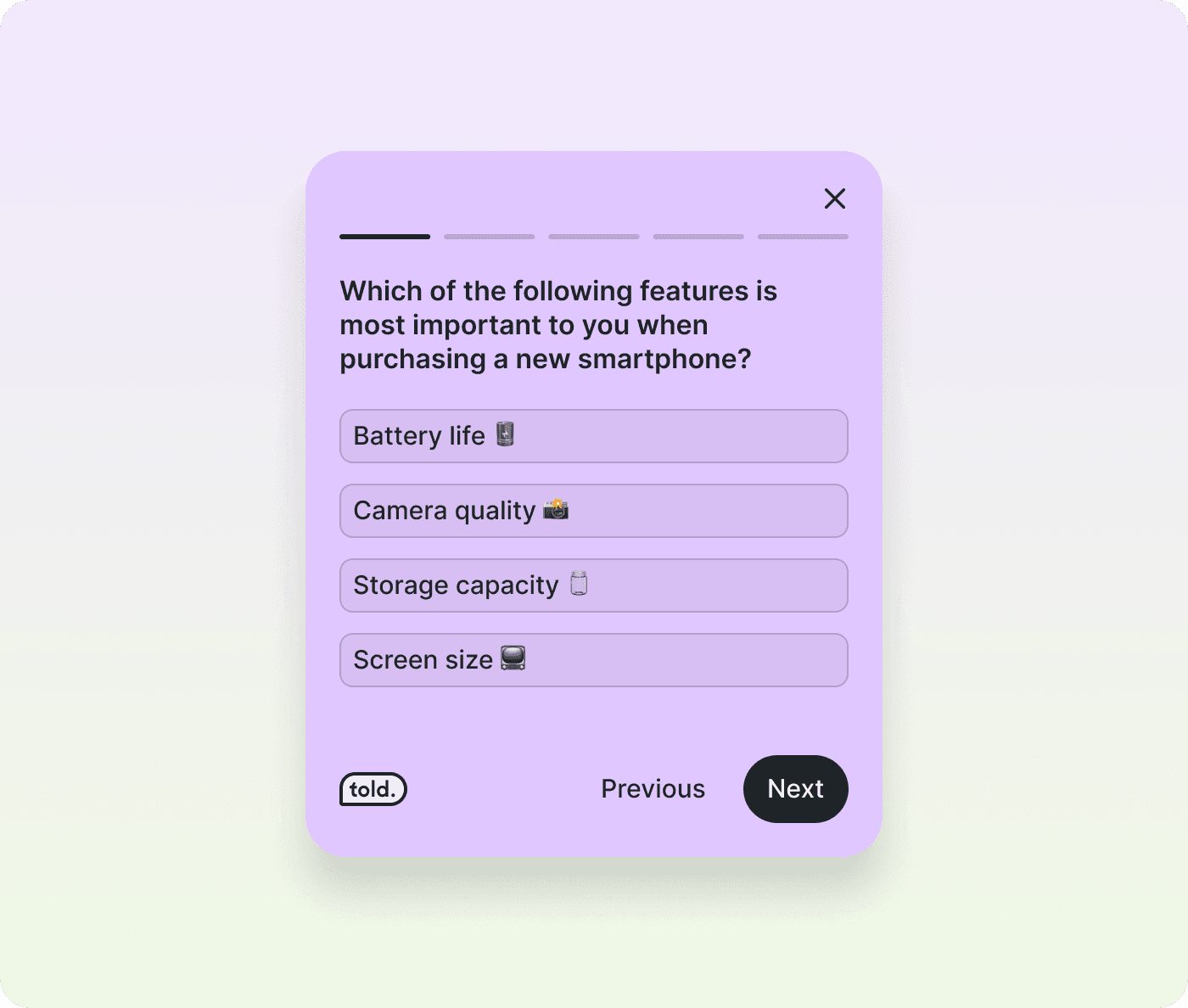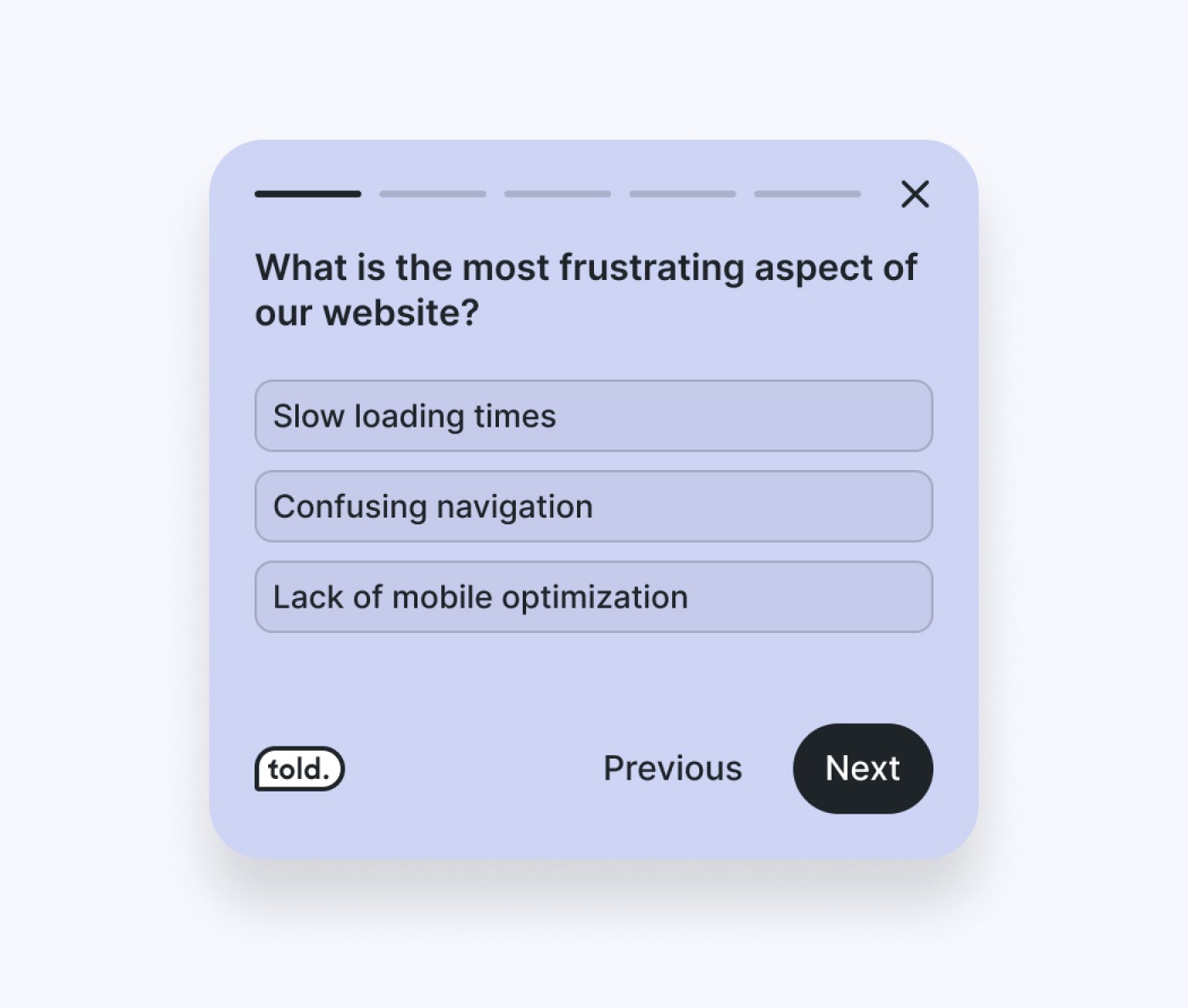Validating the problem: Who thinks pineapple belongs on pizza?
UX Research

Maria Correa
Nov 18, 2023
Just like that, in the world of design, there is this amazing tool called an UX Research Survey that allows you to gain quick insights into the thoughts and opinions of many people. Surveys are a true game-changer when it comes to validating problems and ensuring that your solutions are on the right track.
Before you invest all your valuable time and energy into inventing a revolutionary new feature, it is crucial to determine if the issue you are addressing is widespread and not just limited to yourself and your colleagues. You want to ascertain whether this problem affects a significant number of users.
This is where the process of validating the problem comes into play. It involves ensuring that the issue you are trying to tackle is not merely a temporary fix or a solution that only benefits a few users. By validating the problem, you can ensure that your efforts are focused on creating solutions that genuinely help a large number of users in the long run.
The survey gamification
It is quite common for users to express their preference for the rapid-fire question round in a game show, where they can obtain quick answers from a multitude of participants. This particular aspect is precisely what Told aims to prioritize as well. Our primary objective is to ensure that surveys are not only informative but also engaging and entertaining for the users. By incorporating design elements and different types of questions, we strive to create an exceptional survey experience that exceeds expectations.
By registering on Told, you can create UX Research survey to get user insights. This platform allows you to design engaging and informative surveys that can be used for a variety of purposes. Whether you're seeking feedback, conducting research, or simply wanting to gather opinions, Told provides the tools needed to create a survey. So, don't hesitate and make the most out of this opportunity to reach your audience effectively.

What are the benefits?
Surveys, in essence, are the pulse checkers of the public's opinion, offering designers and researchers a broad perspective on users’ feedback. Think of them as a magnifying glass, zooming in on the collective opinion, revealing valuable insights, trends, and patterns that might otherwise go unnoticed.
Just as you'd hold a quick poll among friends to choose between pizza with or without pineapple, 🍕 surveys scan the minds of the masses, converting silent preferences into discernible choices. They help transform the chaotic jumble of individual tastes into a clear consensus. By understanding these benefits, teams can leverage surveys as powerful tools in their design process. Why?
1. Attitudinal Patterns:
Sounds fancy, but it’s simple. Imagine you're at a party and you decide to conduct an informal survey about pizza toppings. You ask 100 attendees about their preferences and, surprisingly, 90 of them said, "Yes, pineapple for the win!" you've spotted an attitudinal pattern. This overwhelming response indicates a clear attitudinal pattern: the majority of people at the party favor pineapple as a pizza topping.
In much the same way, when tackling design problems, surveys can be a highly effective tool. They allow us to gather a large amount of data in a relatively short period of time. Importantly, this data can provide insights into whether most people hold a particular view or sentiment about an issue. By identifying these common opinions or attitudes, we can make informed decisions that align closely with the preferences of the majority.

2. Covering a Lot of Ground:
Surveys are quick, and they can reach a ton of people. I mean, they are an efficient method of research, especially because they can be quickly distributed to and completed by a vast number of individuals. It's like shouting a question across a stadium and tallying up all the thumbs-ups or thumbs-downs.
This method is particularly advantageous in the field of design. By utilizing surveys, designers can acquire valuable feedback from a diverse array of users. This approach negates the need for time-consuming one-on-one sessions with each user, thereby expediting the feedback gathering process while still ensuring a comprehensive understanding of user perspectives and preferences.

3. Pinpointing Focus Areas:
Survey results provide a crucial source of information for design teams, helping them to identify and prioritize the issues that need to be addressed first. This approach ensures that the most pressing concerns are tackled first, maximizing the overall user experience.
If only 5 people at the party express a dislike for pineapple as a topping, but 50 of them express a big dislike for olives, you'd probably think twice about adding olives to the next pizza order, given the significant number of people who don't enjoy them.
This principle of catering to the majority's preferences to maximize satisfaction is similarly applied by design teams. They strive to prioritize and solve problems that affect the most significant user base, ensuring that their design decisions and improvements have the broadest and most positive impact.

Conclusion: Surveys are the MVP
So, the next time someone is curious about which type of pizza to order, it is important to remember the power and effectiveness of conducting a quick poll. Surveys in the field of design serve the same purpose: they ensure that teams are addressing and resolving problems that are significant to a large number of people, rather than just a select few.
By doing so, the solutions that these teams come up with are not only applicable and practical, but also completely aligned with the specific problem you are trying to validate. Hence, it is essential to use the potential of surveys in order to achieve the desired outcome and deliver products or services that are relevant, helpful, and precisely tailored to meet the needs of the target audience. 🍕📊🚀
























